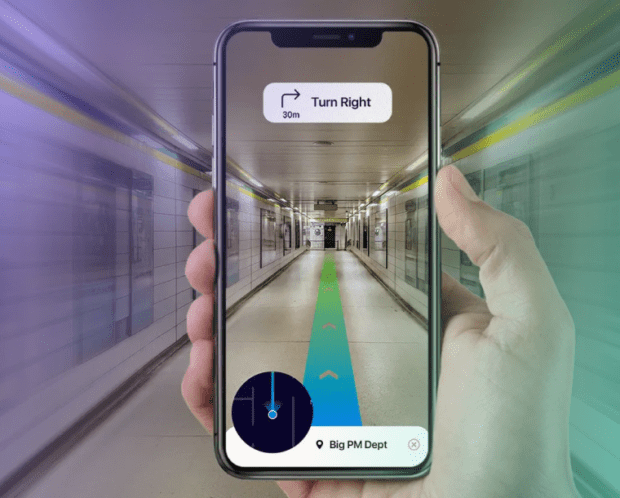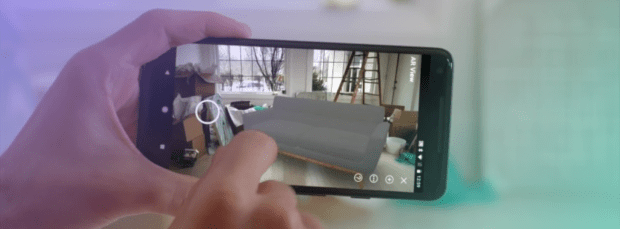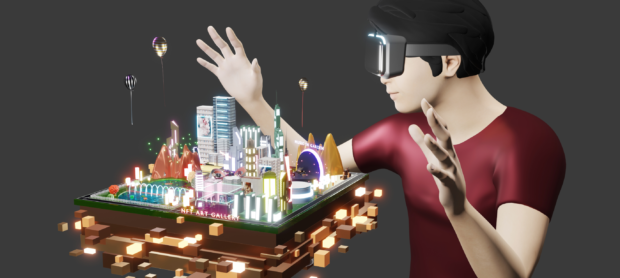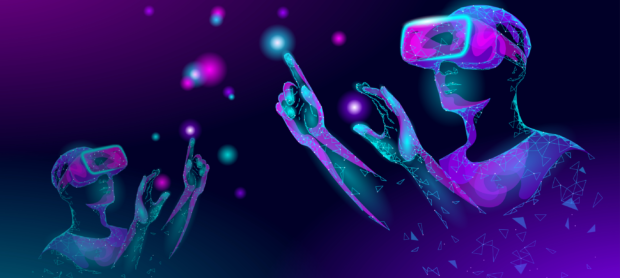In an age where reality is increasingly blended with digital enhancements, the power of Augmented Reality is more significant than ever before. A number of sectors, from gaming and entertainment to healthcare and education, are being transformed by augmented reality (AR) technology, which superimposes computer-generated visuals and information into our real-world environment. AR ushers in a new era of innovation and engagement by expanding the parameters of interaction and experience, where the real and digital worlds live together.
Apple’s ARKit and Google’s ARCore, two industry giants, are providing developers with a solid foundation to build immersive AR experiences. Since these frameworks provide such a wide range of tools and features, AR is now easier to use and more effective in a variety of application settings.
Understanding ARKit
ARKit represents Apple’s foray into the world of augmented reality, providing developers with a powerful toolset for building AR experiences on iOS devices. This sophisticated framework, introduced in 2017, has quickly grown to be an essential part of Apple’s technological ecosystem, pushing the limits of what is possible with augmented reality.
Since its initial release, ARKit has developed steadily, with each subsequent edition adding more sophisticated features. The following is a list of ARKit’s key features:
– Real-World Understanding: ARKit analyzes the environment using sophisticated algorithms and the camera on the smartphone to find horizontal and vertical planes like walls and floors. This knowledge is the basis for precisely locating digital items in the physical world.
– Face Tracking: ARKit offers powerful face tracking features for devices with a TrueDepth front-facing camera. This function enables the development of interactive augmented reality experiences that respond to user expressions.
– Motion tracking: This is a feature of ARKit that keeps AR objects in place when users move around, enhancing the immersion factor of the AR experience.
– Integration with Graphics Tools: Apple’s Metal and SceneKit, two potent graphics tools, are smoothly integrated with ARKit. With the help of this integration, developers can produce visually stunning and intensely engaging AR experiences.


Numerous real-world applications have made use of ARKit’s strength and adaptability, including:
– IKEA Place: This app makes use of ARKit to let users virtually ‘position’ IKEA furniture in their own homes to see how different items might look and fit before making a purchase.
– Measure: is a mobile app that turns your iPhone into a digital measuring device by superimposing measurements over physical things.
– Gaming Apps: By utilizing the capabilities of ARKit, games like Pokemon Go and Angry Birds AR have enchanted millions of players worldwide with their incredibly immersive gaming experiences.
Understanding ARCore
ARCore is Google’s response to the rising tide of augmented reality, aiming to bring AR capabilities to the vast ecosystem of Android devices.
Since its launch, ARCore has seen substantial development thanks to Google’s constant release of updates and improvements in order to stay up with the quickly developing AR field. Three essential ideas underlie the primary functionality of ARCore:
– Environmental Understanding: Like ARKit, ARCore is able to recognize and comprehend the surrounding environment. For more realistic AR experiences, it recognizes flat surfaces and can even estimate the lighting conditions in the area.
– Motion tracking: ARCore makes sure that AR objects seem to be rooted in the real world and do not drift when the user walks around by using the phone’s camera to detect feature points in the environment and IMU (Inertial Measurement Unit) data to comprehend the phone’s location and orientation.
– Light estimation: ARCore can determine the current lighting levels in the surrounding area, enabling programmers to modify virtual objects’ lighting and enhance the AR experience’s realism.
The complex capabilities of ARCore have found many practical uses, giving Android users fascinating and immersive experiences:
– Google Maps Live View: This feature of Google Maps, which overlays navigation instructions onto the real environment to make it simpler for users to comprehend and follow directions, is a notable use of ARCore.
– Just a Line: This fun app allows users to draw in the air with their phone, creating a unique AR experience.
– AR-based gaming: ARCore’s capabilities have been used by games like Ingress and Minecraft Earth to create immersive AR gaming experiences that integrate virtual gameplay into the real world.

Building an AR App: Considerations and Steps
While developing an AR application might be exciting, it also demands considerable thought and strategic planning. Here is a simplified step-by-step instruction and a list of important things to think about while creating an AR application utilizing ARKit and ARCore.
1. Define the Objective: It’s important to have precise, succinct objectives. You should be very clear about the goals you have for your app and how AR technology may help you achieve those goals.
2. Understand Your Audience: Tailor your application to the needs and preferences of your target audience. Understanding user behavior and preferences can help make your app more user-friendly and engaging.
3. Platform Selection: Your intended audience will determine whether to use ARKit or ARCore. While ARCore is appropriate for a wider range of Android users, ARKit is best for apps targeting iOS consumers.
4. Hardware requirements: Consider your target consumers’ device capabilities. On older smartphones, more advanced AR capabilities might not work properly.

How to Build an AR App:
Validating an Idea: After selecting a concept, confirm the idea’s viability and applicability.
1. Designing the AR experience: Plan how AR will integrate into your program, from user interaction to graphical components, while designing the AR experience.
2. Development: Depending on the platform you’re targeting, you may either utilize ARKit or ARCore to construct your AR app during this coding step.
3. Testing: Thorough testing is essential to identifying and eliminating issues and ensuring the app functions properly.
4. Launch: Introduce your app to the intended market following testing and final tweaks.
Recommendations for Improving the Development Process:
1. Utilize the tools: Utilize ARKit and ARCore’s features to the fullest extent possible. These platforms include a wealth of capabilities that may make the development process simpler.
2. Keep up to date: AR technology is always changing. To guarantee that your app remains competitive, keep up with the most recent ARKit and ARCore features and enhancements.
3. Focus on User Experience: AR offers unprecedented user engagement. Always consider how to enhance the user experience and make the app intuitive and enjoyable.
Future Trends in AR Development
Augmented Reality is rapidly evolving, promising exciting innovations ahead. Extended Reality (XR), an immersive amalgamation of AR, Virtual Reality, and Mixed Reality, is predicted to gain prominence. Additionally, AR’s application in eCommerce and education will revolutionize these sectors, offering interactive, real-world product visualizations and dynamic learning experiences.
However, AR’s progress isn’t without hurdles. Privacy concerns, data security issues, and the potential for a digital divide pose significant challenges. Tackling these problems will necessitate innovation, robust security measures, ethical guidelines, and efforts to democratize AR access.
In this landscape, ARKit and ARCore are key players, empowering developers to build compelling AR experiences. They are not just following trends but setting them, leading the charge toward a future where AR is an integral part of our lives. Their ongoing advancements are paving the way for a reality that is truly augmented.

Conclusion
As we explore the fascinating world of augmented reality, it becomes clearly evident how crucial platforms like ARKit and ARCore are to ignite this revolution. These platforms offer strong capabilities that can turn straightforward apps into compelling augmented reality (AR) experiences, bringing virtual objects to life in the real world.
There are many prospects for innovation and growth as the AR frontier continues to grow. Developers, technologists, and visionaries are invited to rethink reality, design fresh experiences, and influence the direction of interactive technology.
Whether you’re taking the first steps in AR development or looking to refine your existing AR project, remember, you don’t have to do it alone. At Eventyr, we’re committed to helping you navigate this exciting journey. With a highly skilled professional team at your disposal, we can help bring your AR idea to life, guiding and supporting you every step of the way.
Don’t just dream about the future, create it. Contact us today to discover how we can collaborate on your next groundbreaking AR project.




